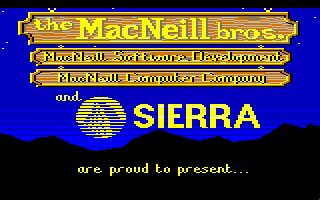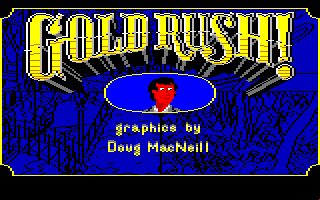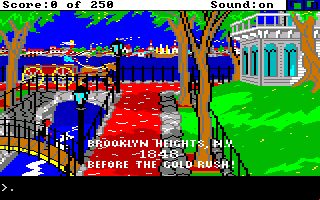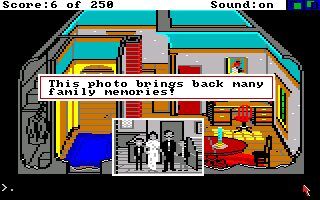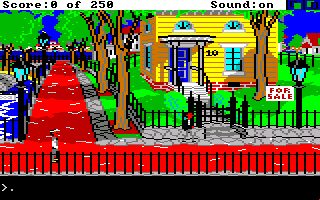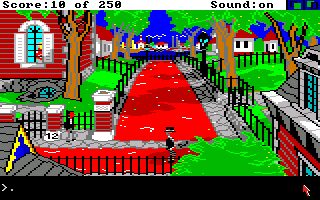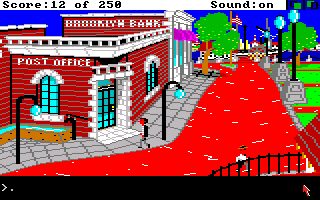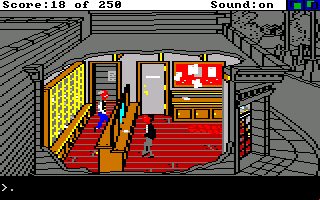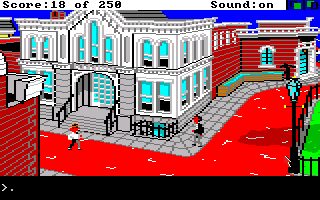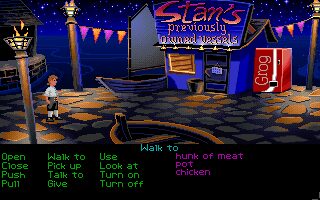Gold Rush! is a graphic adventure game designed by Doug MacNeill for Sierra On-Line and released in 1988. The game was developed for MS-DOS and later ported to other platforms including the Amiga and Atari ST.
Set during the California Gold Rush of 1849, Gold Rush! follows Jerrod Wilson as he leaves his hometown of Brooklyn to seek his fortune in the gold fields of California. Much like the earlier King's Quest series, the game revolves around exploration and puzzle-solving, but the historical American frontier setting provides a refreshing departure from the fantasy kingdoms that dominated Sierra's catalog at the time. The authentic period atmosphere, complete with period-appropriate dialogue and situations, creates an immersive experience that feels distinctly different from games like Space Quest I: Roger Wilco in the Sarien Encounter or Leisure Suit Larry II.
What sets Gold Rush! apart from other Sierra adventures is its innovative branching structure. Players can choose from three distinct routes to reach California: the treacherous overland trail, the dangerous Cape Horn sea voyage, or the disease-ridden Panama route. Each path offers completely different challenges, characters, and scenarios, providing genuine replayability rarely seen in adventure games of the era. This design creates the compelling sense that meaningful events are occurring on the paths not taken, giving weight to player decisions in a way that linear adventures like Police Quest: In Pursuit of the Death Angel simply cannot match.
The overland route captures the hardships of wagon train travel with river crossings, hostile encounters, and supply management challenges reminiscent of The Oregon Trail. The sea voyage around Cape Horn presents maritime dangers and shipboard intrigue, while the Panama crossing involves jungle diseases and treacherous mountain passes. Each route is populated with unique characters and period-appropriate obstacles that require different problem-solving approaches.
The puzzle design strikes a good balance between logical thinking and historical knowledge, though some solutions rely heavily on understanding 19th-century customs and technology that may frustrate modern players. The game's parser interface, typical of Sierra adventures from this period, occasionally suffers from the usual guess-the-verb problems, but the contextual clues are generally clearer than in contemporaries like Manhunter: New York.
Graphically, Gold Rush! showcases Sierra's improved AGI engine with detailed backgrounds that effectively convey the period setting. The character animations, while limited by the technology, capture the essence of frontier life better than the more fantastical elements found in King's Quest IV. The sound design appropriately emphasizes period music and environmental effects that enhance the historical immersion.
The game's multiple paths provide substantial replay value, as each route contains enough unique content to feel like playing a different game entirely. This approach influenced later Sierra titles and adventure games that experimented with branching narratives, though few executed the concept as thoroughly as Gold Rush!. Players seeking similar historical adventures might enjoy Conquest of Camelot or Conquests of the Longbow, though neither matches Gold Rush!'s ambitious scope.
Despite occasional parser frustrations and some obtuse historical puzzles, Gold Rush! represents one of Sierra's most ambitious and successful departures from their established formulas, offering a rich, replayable experience that captures both the excitement and hardships of America's westward expansion.

